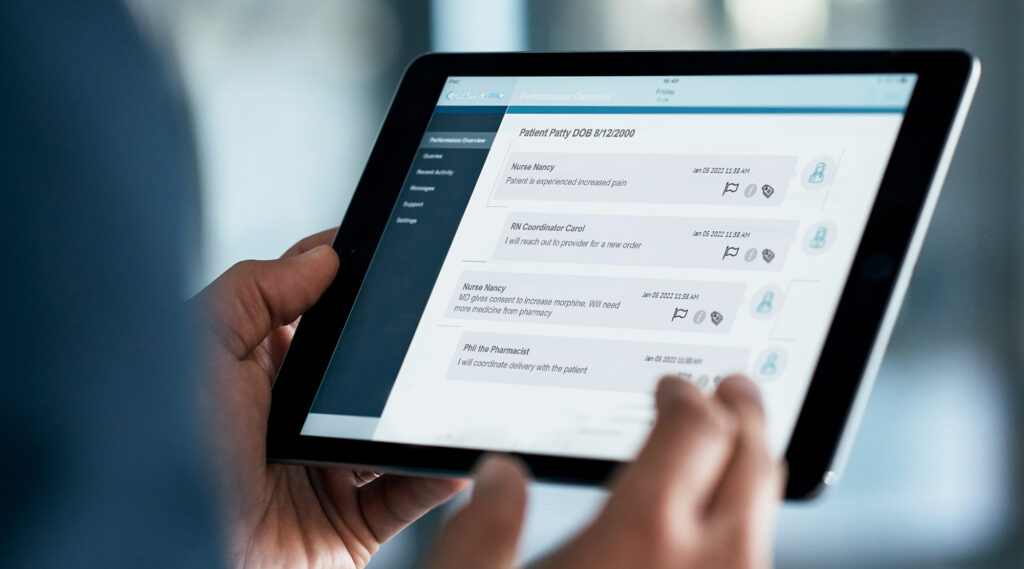CitusHealth
Mar 22 2023
Reading Time: 6 minutes
Regulatory scrutiny continues to intensify for hospice providers across the country, with incomplete plans of care (POCs) being among the most common items cited on Hospice CAHPS surveys. This comes after years of hospice surveys falling short on condition and standard-level requirements — both of which are intended to ensure the quality of care and services provided by hospices.
CMS is putting more emphasis on the topic of compliance and adherence to hospice care plans, recently announcing it will be the centerpiece of the new surveyor training requirements. Their list of the most common deficiencies related to hospice plans of care includes lack of individualized POCs, hospice staff missing direct care visits, documentation of visits failing to meet requirements, incomplete POCs, and POCs lacking regular updates.
Providers and their staff should be aware of POC requirements and understand the areas they can improve. Here are some of the tools that can help improve compliance and adherence.
Improve care coordination within IDGs
Care coordination is a big part of hospice care plans. The entire interdisciplinary group must work together to engage with the patient and family’s needs and goals of care. They are responsible for establishing the POC, continuously updating it during the patient’s hospice service, and offering a bereavement POC and support services to the caregiver and family for a year or more after the death of a patient. To successfully support and manage the physical, medical, psychosocial, emotional, and spiritual needs of patients and their families, IDGs must have seamless communication and collaboration using integrated tools such as patient discussion groups (PDGs).
Adding significant value in improving care coordination and IDGs, a PDG is a customizable chat thread for a single patient. It’s strictly for IDGs to communicate about a patient’s POC in one location to give an up-to-date view of care, progress, and needs. This means that nurses, physicians, and all other support personnel can provide updates to the POC simultaneously in a single location. It not only provides documentation for CMS requirements and payor compliance, but also saves every team member valuable time instead of trying to communicate by phone calls or emails. Here are some important elements of a PDG:

Increase staff efficiency
So how can you lift the administrative burden from your clinical staff to help them stay focused on their patients as well as help your non-clinical staff streamline their duties? One change you can make is to reduce the manual processes that you frequently use by automating those workflows. For many hospice providers, a common manual process is obtaining signatures from family caregivers on printed documents, returning those documents to the office, scanning them into the EHR, and then attaching them to the patient record. Your clinical staff is in desperate need of an automated, more streamlined process that takes care of this workflow.
The right tools can make documents digital and easily send the document to the POA or family caregiver app or app-less via a secure link, which can then be opened and signed electronically. The signed document can then get automatically attached to the patient record into your EHR. Not only does this increase staff efficiency by saving your clinicians time, but it also provides documentation for CMS requirements and payor compliance.
Provide education and training
CMS requires that each patient and family caregiver get education and training for the care and services identified in the POC. For example, a surveyor may ask whether hospice staff provided education and training to the patient and any caregivers when appropriate and according to the plan of care. Beyond compliance, these resources can provide comfort and help during a very difficult time, which can be significant to patient and caregiver satisfaction ratings on hospice CAHPS scores.
Many hospice providers currently share printed resources with family caregivers. Unfortunately, this can result in outdated information and copies getting misplaced. Providing these resources digitally is important for several reasons:
“Only between 50 and 60% of patients remember key information from recent inpatient stays, including their diagnosis and even changes in medication regimens.” — The Joint Commission Journal on Quality and Patient Safety
Overcome communication challenges
Hospice communication methods matter to family caregivers, who want to know they can reach a nurse when needed. Secure, real-time messaging and video tools can help in several ways:
The methods discussed in this blog are only some of the ways you can overcome hospice survey deficiencies of POC adherence and compliance. These serve as a good starting point for hospice providers to consider where they might be falling short.